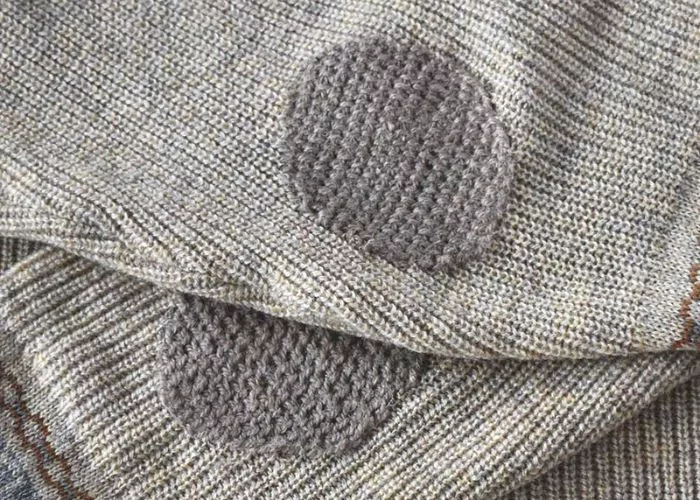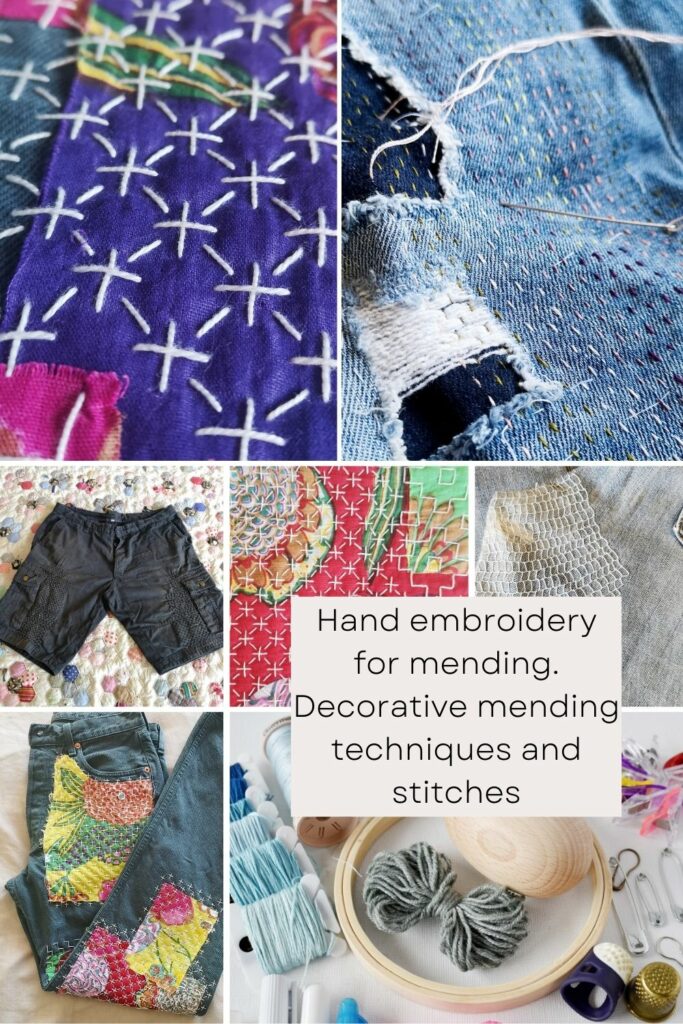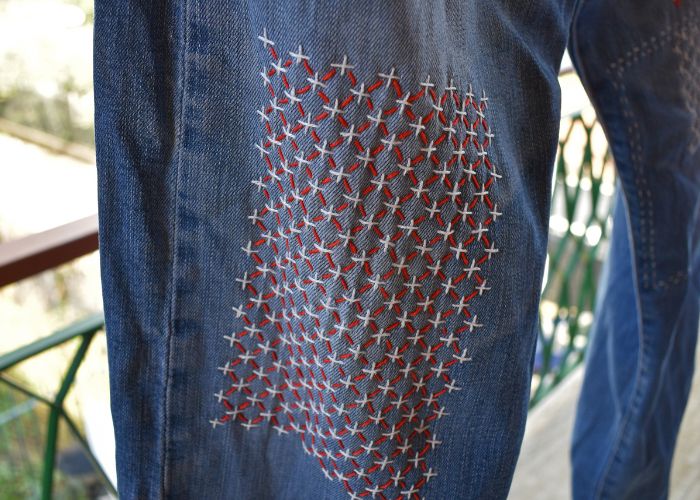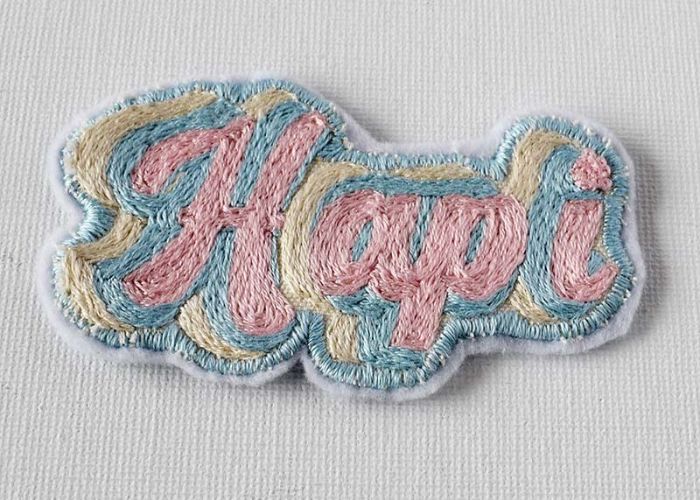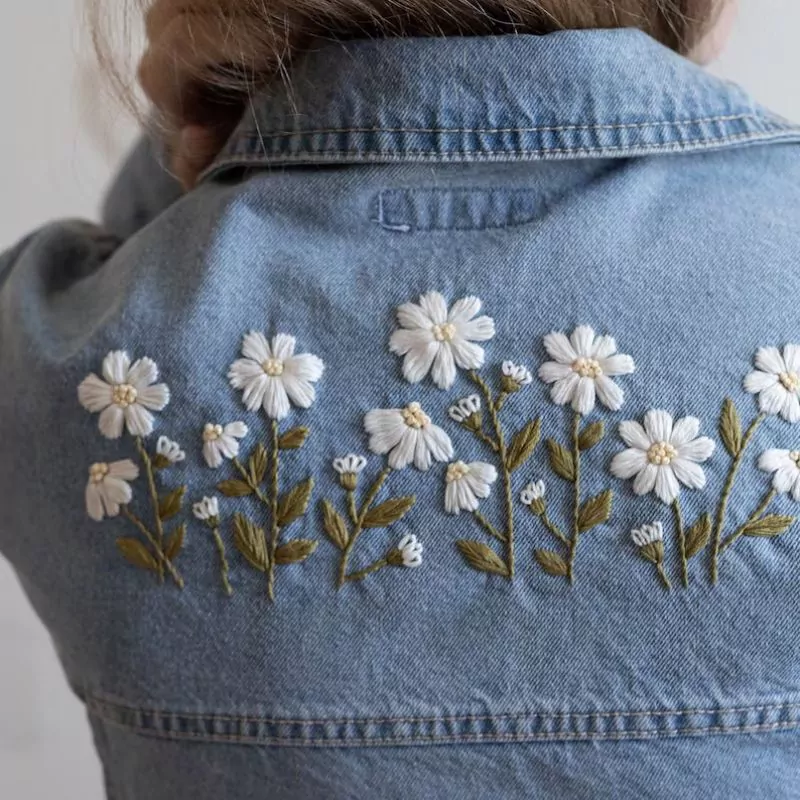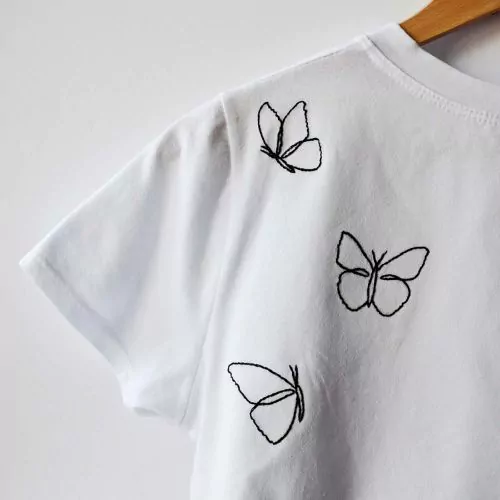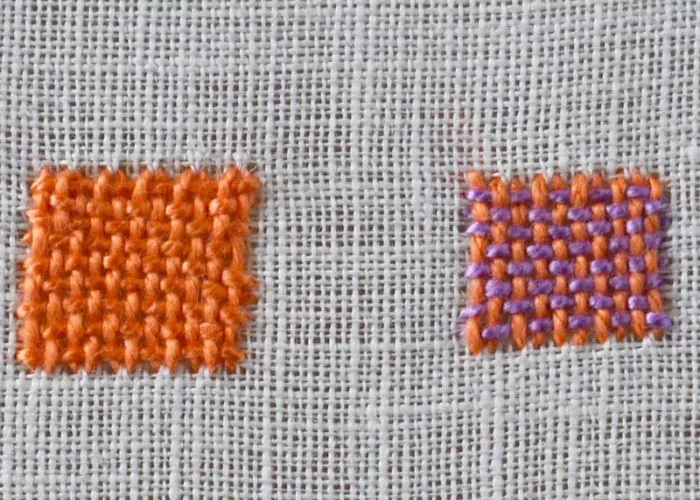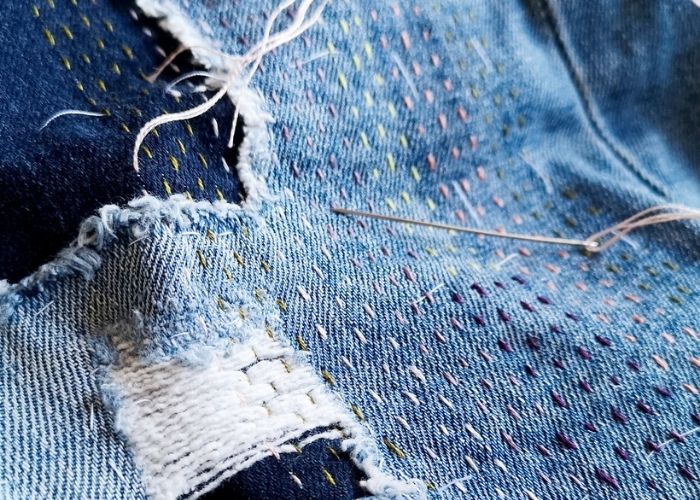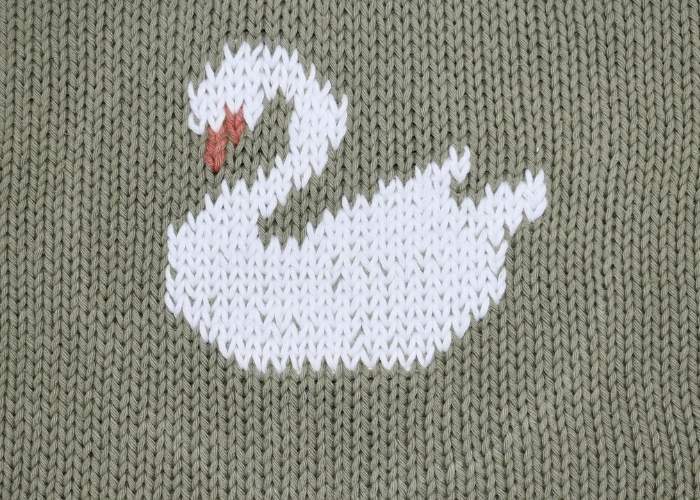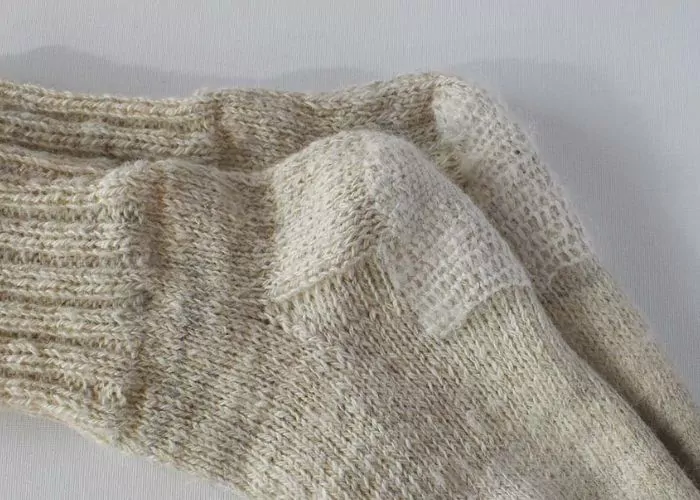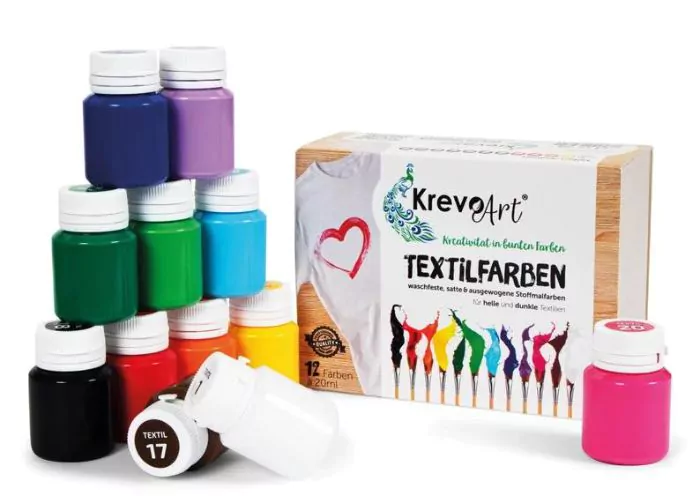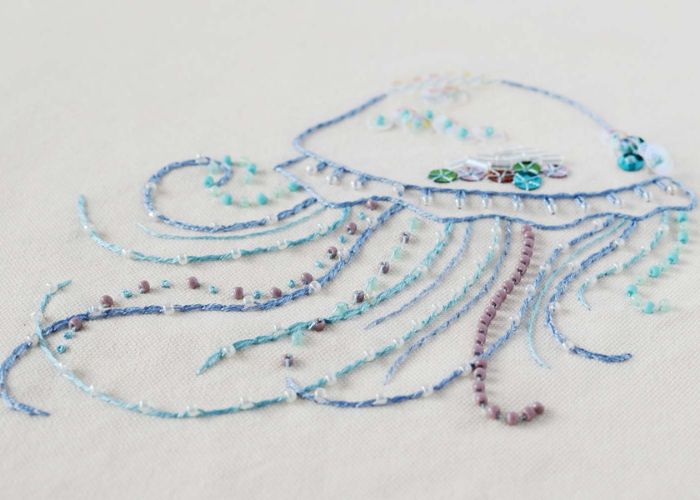Hand embroidery for mending. Decorative mending techniques and stitches
Hand embroidery for mending
In a world increasingly conscious of sustainability and creativity,Hand embroidery decorative mending has emerged as a beautiful solution to prolonging the life of our beloved garments. We no longer need to discard clothes at the first sign of wear and tear; instead, we can embrace the opportunity to transform these imperfections into unique, artistic expressions. Decorative hand embroidery for mending repairs and revitalizes clothing, making each piece more personal and meaningful.
This blog post explores various techniques of hand embroidery for mending, from traditional methods like Sashiko and Boro to modern approaches such as mixed media embroidery and embellishments. Each mending method uniquely blends functionality with artistry, turning simple repairs into standout features. Whether you are a seasoned embroiderer or a beginner looking to experiment with fabric and thread, you will find inspiration and guidance here to breathe new life into your wardrobe.
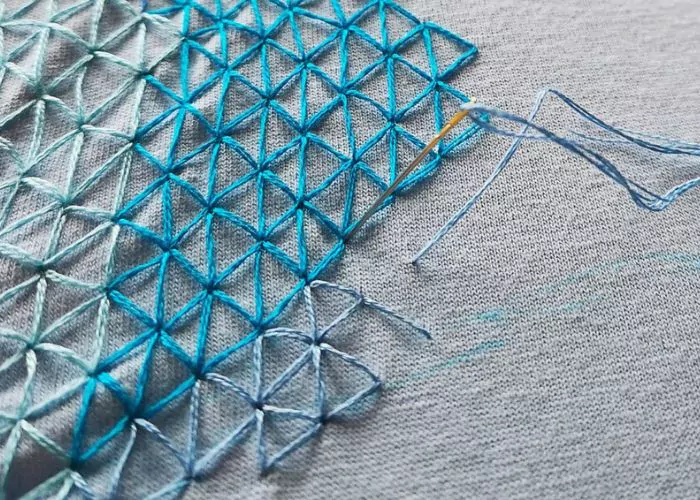
Disclaimer: To cover the cost of creating free embroidery patterns and video tutorials for this blog, I do sometimes link to products. Please assume these links are affiliate links. If you choose to buy through my links then THANK YOU – it will make it possible for me to keep doing this.
Visible Mending with Sashiko
Sashiko is a traditional Japanese technique that uses simple Running stitch to create complex geometric patterns on fabric. Sashiko is functional and highly decorative, making it an outstanding technique for visible mending. The repetitive, clean lines of Sashiko stitching can reinforce worn areas of clothing, making them stronger and extending their lifespan. If the fabric is heavily worn out, you can add an additional layer of fabric from the back side to reinforce it. The aesthetic appeal of Sashiko lies in its symmetry and the visual texture it adds to the fabric, turning a mundane repair into a work of art.
Traditionally, Sashiko stitches were made on indigo-dyed blue fabric with white cotton threads. Therefore, they look charming on denim, where the white stitches contrast beautifully with the blue fabric.
For the best results, choose traditional Sashiko designs and use Sashiko needles and threads. This will secure the best result and the most pleasant stitching experience.
Boro Mending
Originating from Japan, Boro involves layering fabric patches and securing them with visible Running stitch. This technique is celebrated for its rustic, patchwork aesthetic, combining functionality and artistic expression. Boro is a sustainable technique for decorative mending as it allows you to use various fabric scraps, creating a collage-like effect that tells a story through different textures and patterns. The extensive stitching secures the patches and adds visual interest, making the repair a prominent, proud feature of the garment.
Embroidered Patches
Embroidered patches are fantastic décor elements that can cover up holes, stains, or other minor localized damage. To embroider the patch, use various embroidery stitches like Satin stitch, Chain stitch, or French knots, and then attach your patch to the garments or accessories (like hats or bags) to cover the damage and make the piece stand out. Often, embroidered patches outlive the garments and are moved from one piece of clothing to another.
You will need felt fabric, embroidery floss, needles, and scissors to make a hand-embroidered patch.
Decorative Surface Embroidery
With decorative embroidery stitches, you can use damaged garments as a canvas for your creations. Anything is possible here – from small decorative touches covering tiny holes or stains to extensive embroidery covering the entire garment. Modern hand embroidery allows limitless designs, from simple motifs to elaborate scenes.
Embroidery adds color, texture, and personal flair to garments, making each mended piece unique. It’s an excellent way to cover holes or stains while embellishing the item with intricate, handcrafted art. Simply choose the pattern and let your creativity flow.
To decorate your clothes with embroidery, you will need a pattern, transferring tool, stabilizer, embroidery floss, needles, and scissors.
Darning methods
There are several different ways to use darning for mending purposes. Your choice will depend on the garment’s fabric and the visual effect you desire to reach.
Weaving
Weaving involves weaving horizontal and vertical threads to fill and cover the holes, effectively reweaving the missing area. Using Weaving stitch for woven darning is highly effective for functionality and aesthetics, particularly when colorful threads are used to create patterns like plaid or checkers.
For this method, you will need a needle and threads. A weaving loom is also very handy for speeding up your work.
Darning
The darning method is very straightforward: Apply the parallel rows of Running stitch close to each other to create a dense pattern of straight stitches. This technique reinforces worn fabric and secures the layers of patches together.
You can choose Kogin Darning, in which the rows of Running stitch are positioned to form decorative patterns for a more visually appealing effect.
You will only need a needle, a thread, and scissors for this simple mending method.
Swiss Darning
Swiss darning, also known as Duplicate stitch, mimics the knitted stockinette stitches to cover worn areas and stains or recreate missing pieces and reconstruct the holes. This technique is only suitable for knitwear, as it recreates the stockinette stitch and reinforces the knit while preserving the original texture and appearance. You can opt for an invisible mend with the same thread as the original knit or create original patterns and motives with contrasting threads.
For darning knitwear, use thicker wool treads and a blunt darning needle.
Scotch Darning
Scotch darning is another way to mend knits and recreate missing pieces of fabric to mend bigger holes. This stitch creates a robust and secure mend and is perfect for repairing the heels of socks and the elbows of sweaters—parts that suffer the most wear. It is an excellent technique for decorative mending because it blends the repair seamlessly with the surrounding fabric or turns it into a standout feature with contrasting colors.
For this type of mending, a darning needle and yarn of the same weight as the knit are needed.
Kintsugi Inspired Mending
Gold Embroidery is inspired by the Japanese art of Kintsugi, where broken pottery is repaired with gold. This technique highlights the mended areas with gold thread. It’s a beautiful way to embrace imperfections, turning them into unique features. Gold embroidery makes the repair stand out, celebrating the garment’s history and resilience. This approach transforms flaws into artistic statements, adding a touch of elegance and luxury to the piece.
You will need a golden metallic thread, a needle, and scissors for Kintsugi-inspired mending.
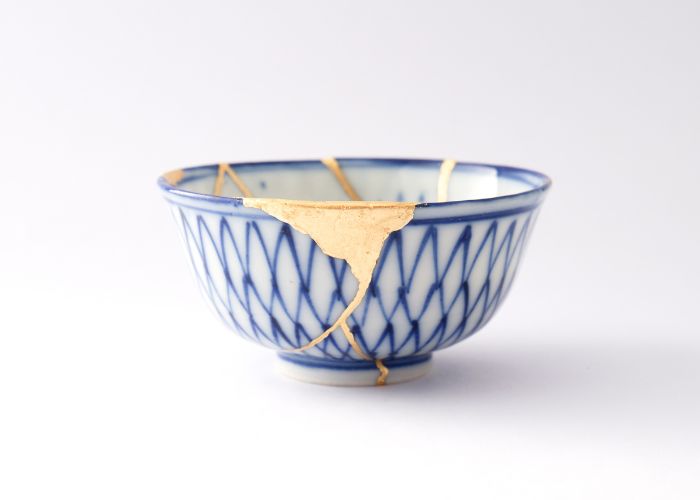
Mixed Media Embroidery
Using fabric paint to add designs over stained or damaged areas can create a mixed-media effect combining texture and color. Fabric paint is an excellent addition to the decorative mending repertoire, allowing customization and creativity. You can create intricate designs and patterns or even paint small scenes directly onto the fabric and add some embroidery stitches to highlight the mend. This technique covers the damaged areas and adds a unique artistic touch that makes the garment unique.
You will need wash-resistant dyes or fabric marker pens, embroidery floss, needles, and scissors for mixed media embroidery on clothes.
Beaded Embroidery
Adding beads and sequins to your mending stitches for a sparkling effect can turn a simple repair into a glamorous feature. Beaded embroidery is a beautiful decorative mending technique because it adds texture, color, and a bit of shine to the fabric. It’s particularly effective on special occasion garments or accessories where you want to add a touch of elegance. Beads can outline shapes, fill areas, or create detailed patterns, making each mended spot a piece of art.
You will need high-quality glass beads, beading needles, and beading threads.
Hand Embroidery Stitches For Mending
Some methods mentioned above use specific stitches, such as Duplicate stitch or Weave stitch, for mending. Here, I want to shortlist the most universal stitches for the multiple simple mends and adjustments.
- Running Stitch: The basic stitch used in Sashiko and Boro mending is also great for darning and basting.
- Backstitch: This strong stitch is ideal for outlining shapes and adding details. It is also great for sewing when you need to adjust the seams.
- Chain Stitch: Decorative stitch that creates a textured line. Great for lettering and for filling.
- Satin Stitch: This filled stitch is used to cover areas completely.
- Herringbone Stitch: This stitch creates a crosshatch pattern that can be used decoratively and functionally. It is excellent for simple hems and borders.
- Whipstitch: Simple stitch great for attaching patches and simple sewing.
- Blanket Stitch and it’s variations: Great for securing and decorating edges and for reinforcing the consumed parts of the fabric.
If you are a beginner learning your first embroidery stitches, download my free e-book “Five Essential Hand Embroidery Stitches for Beginners.” This detailed hand embroidery guide with step-by-step photo instructions will guide you through your first steps.
Additional Resources
Visible mending is a fascinating and vast topic that I can not fit into one blog article. If you wish to dive deeper, take a look at these articles:
- Hand embroidery stitches for mending
- Mending tools and materials. What you need to get started with visible mending
- How to mend holes in jeans by hand. A simple method with running stitch embroidery
- Visible Mending Knitwear: A Creative and Sustainable Approach
- Visible Mending Ideas, Techniques, and Inspiration to Transform Your Clothes
- Embroidery materials for beginners. All you need to start learning hand embroidery
Another great way to learn visible mending and find inspiration for your next mending project is to read books about visible mending. Here are some of my favorites:
- Mending Matters: Stitch, Patch, and Repair Your Favorite Denim & More by Katrina Rodabaugh
- Modern Mending: How to minimize waste and maximize style by Erin Lewis-Fitzgerald
- Visible Mending: A Modern Guide to Darning, Stitching and Patching the Clothes You Love by Arounna Khounnoraj
- The Mending Directory: 50 Modern Stitch Patterns for Visible Repairs
- Creative Mending: Beautiful Darning, Patching and Stitching Techniques by Hikaru Noguchi
Over To You
Decorative mending is more than just a way to fix worn-out clothing. It celebrates creativity, sustainability, and craftsmanship.
We’ve explored various mending techniques that transform simple repairs into artistic expressions. Traditional Japanese methods showcase how functional stitches can also be visually stunning. Embroidered patches and decorative surface embroidery add personalized flair and vibrant color, making each piece unique.
Darning techniques like weaving, Swiss darning, and Scotch darning reinforce the fabric and offer opportunities to play with patterns and textures. Beaded embroidery adds a touch of sparkle, perfect for special occasions.
Each mending method highlights the potential to turn damage into design, blending the practical with the aesthetic. By incorporating these techniques, you can extend the life of your clothes, reduce waste, and let your stitches tell a story of resilience and beauty.
